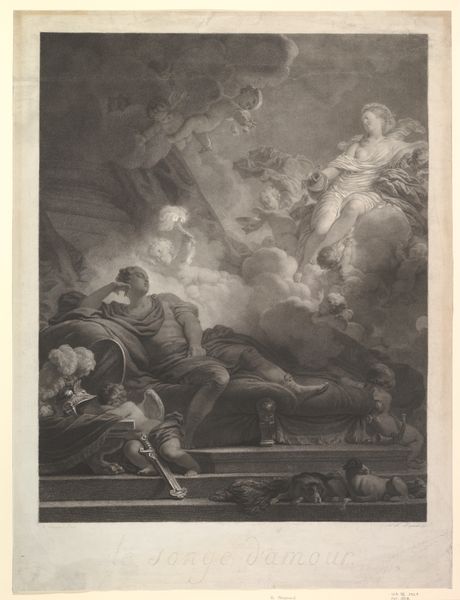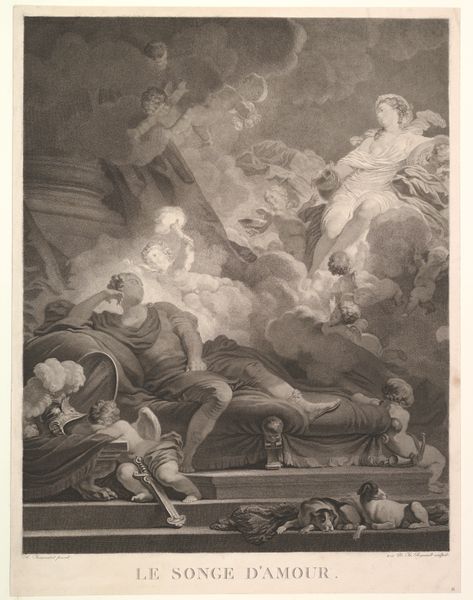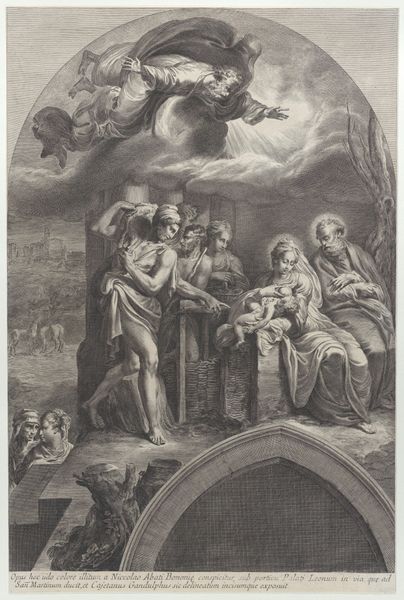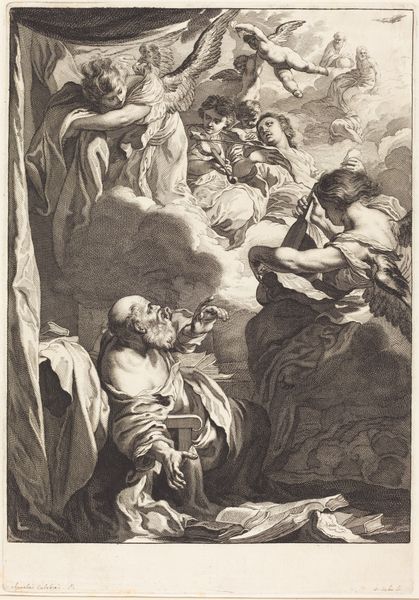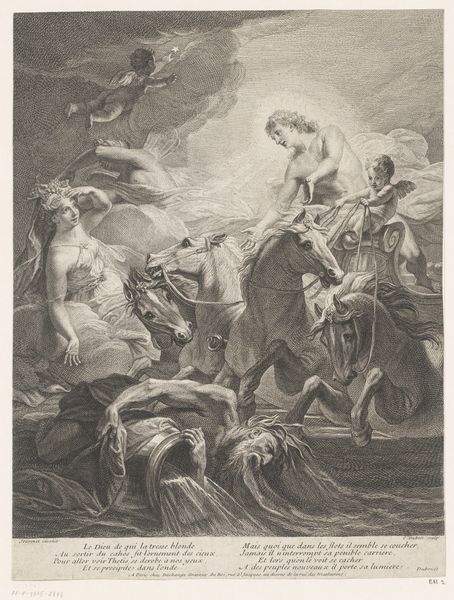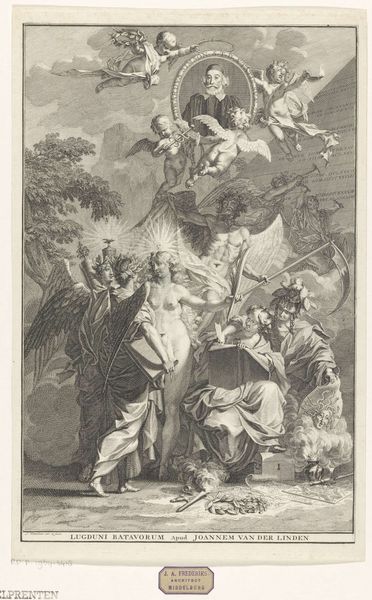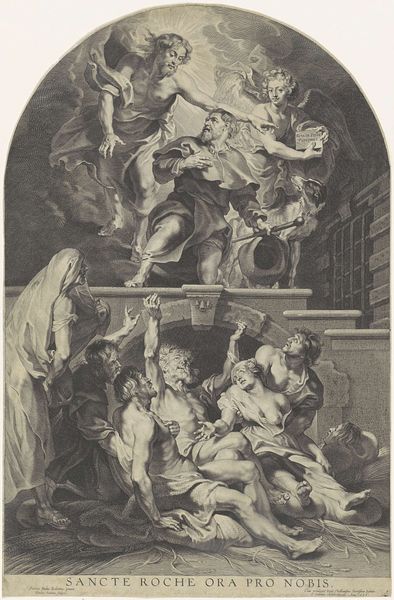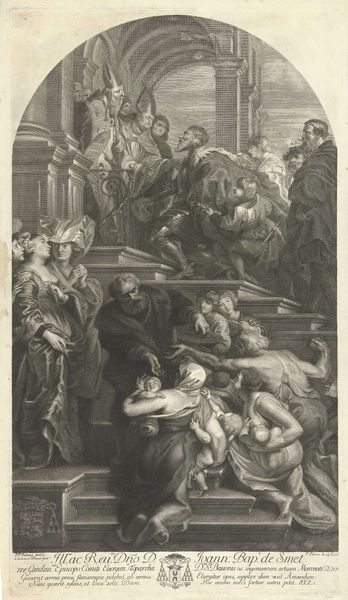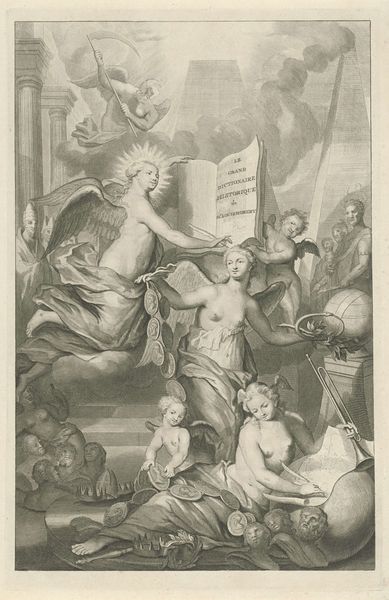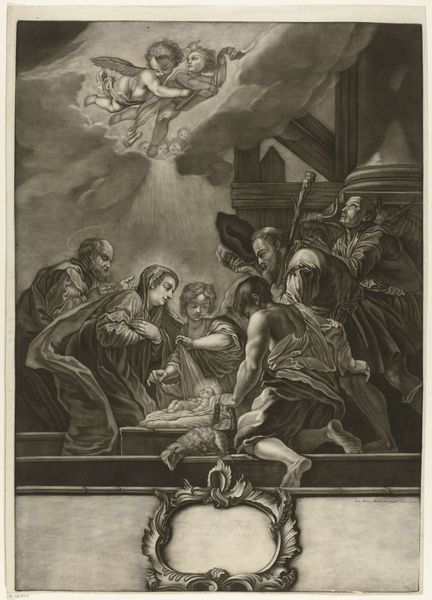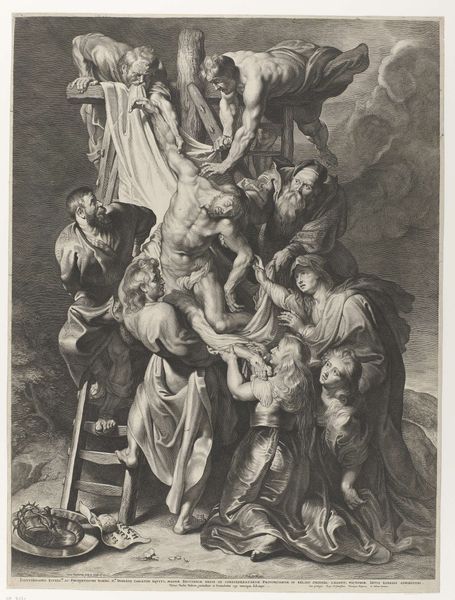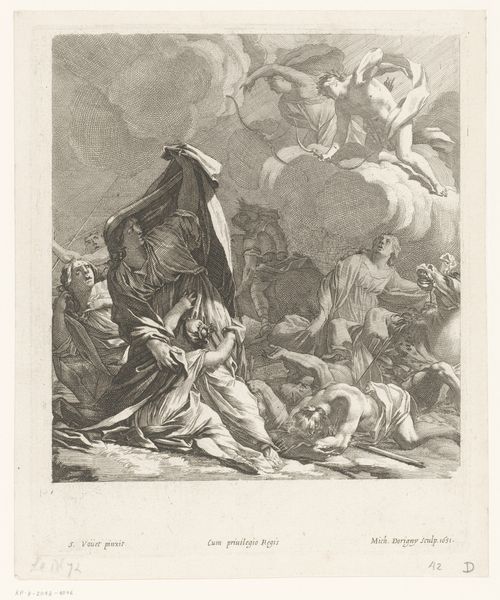
print, engraving
#
neoclacissism
#
allegory
# print
#
charcoal drawing
#
figuration
#
history-painting
#
academic-art
#
engraving
Dimensions: height 616 mm, width 592 mm
Copyright: Rijks Museum: Open Domain
Charles Howard Hodges created this artwork, "Hercules Strangling the Two Serpents in His Cradle," using mezzotint. Here we see the infant Hercules, a symbol of strength, confronting snakes, emblems of deceit and danger, sent by the goddess Hera. The serpent is a charged image. We see it not only here, but also entwined around the staff of Asclepius, a symbol of medicine, or as the Ouroboros, consuming its own tail—a symbol of eternity. Its meanings are not fixed. In some cultures, it represents healing, renewal, and transformation; in others, chaos, temptation, and destruction. We can see its recurring presence in a multitude of forms, from ancient myths to modern day logos. This image evokes a sense of primal fear and triumph. Hercules's victory over the serpents symbolizes the triumph of good over evil and the power of innocence, engaging viewers on a subconscious level. As an archetypal narrative of overcoming adversity, this image reminds us of the non-linear, cyclical progression of symbols, resurfacing, evolving, and taking on new meanings in different historical contexts.
Comments
No comments
Be the first to comment and join the conversation on the ultimate creative platform.
